Sustainable Aquaponics
Team Name: Sustainable
School: Timberlin Creek Elementary
Team members: Nicole H. (5th Grade), Ashweja M. (5th Grade), Jonalou O. (5th Grade) and Katori B. (5th Grade)
Katori B. has tested COVID positive so she cannot go to Cocoa. Jonalou O. is from the Philippines so she cannot go to Cocoa either. We included both their names because they have worked together on the project.
Animal: tropical fish
Support received: Ricardo Haragutchi (mentor), Sharon Moody (teacher), Kimberly Plancher (teacher), Amazon.com (parts), NextDayFlyer (marketing brochure), Walgreens (marketing poster)
This project is for the 2023 Energywhiz In-Person in Cocoa, FL, C3 Competition. It focus on tropical fresh water fish aquaponics and water collection prototypes.
The first module of this prototype is the aquaponics system. This system relies on the symbiotic relationship between plants and fishes on a closed watering system which avoids water waste or chemical products runoffs to our precious rivers and oceans.
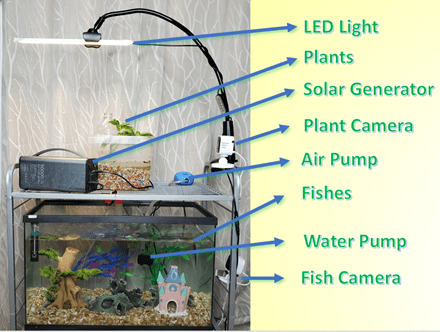
The water in the aquarium is pumped to the plant bed above it, together with the waste created by the fishes. The plants, which are supported by an inert substrate, filter this waste, using it for its growth and return clean water back to the fishes. The pumps and LED light are fed by a solar generator which is connected to a solar panel outside of the house. Additional monitoring and automation components were included to enable easier management such as web cameras and automatic feeder.
We used the guppies as tropical fishes but any species could be used. I started with 12 guppies and after 5 months I had about 40 guppies. Not only the plants were able to grow (I used basil) but the number of fish has more that tripled.
I noticed that water was one of the main components required. Although it is on a closed cycle environment, which uses only about 10% of the water required compared to traditional plant growing in soil, we were having to replenish it due to loss by evaporation. For this purpose, we created a water collection from thin air:
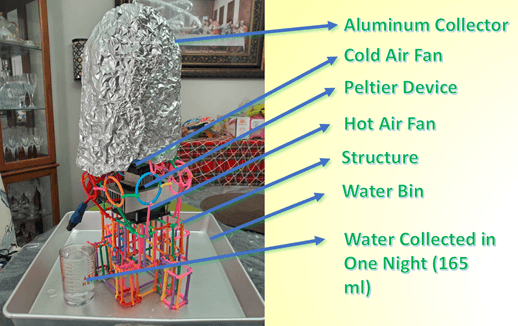
This system is based on a Peltier device installed in the middle which is responsible for separating cold air from hot air. The cold air is blown up onto a metallic surface which is used to collect water from condensation.
I also added a water level alarm because I had experiences when the pump started pumping outside the aquarium. Here is the design I used:
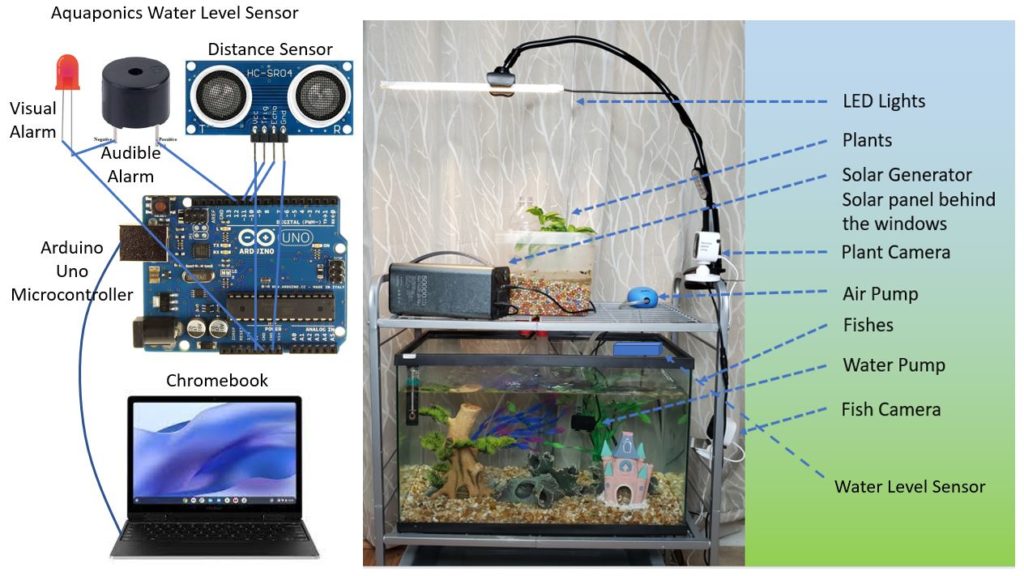
This alarm is based on a ultrasound distance sensor controlled by an Arduino Uno microcontroller. The microcontroller required a osftware coding which I included through a chromebook following the flow sequence below:
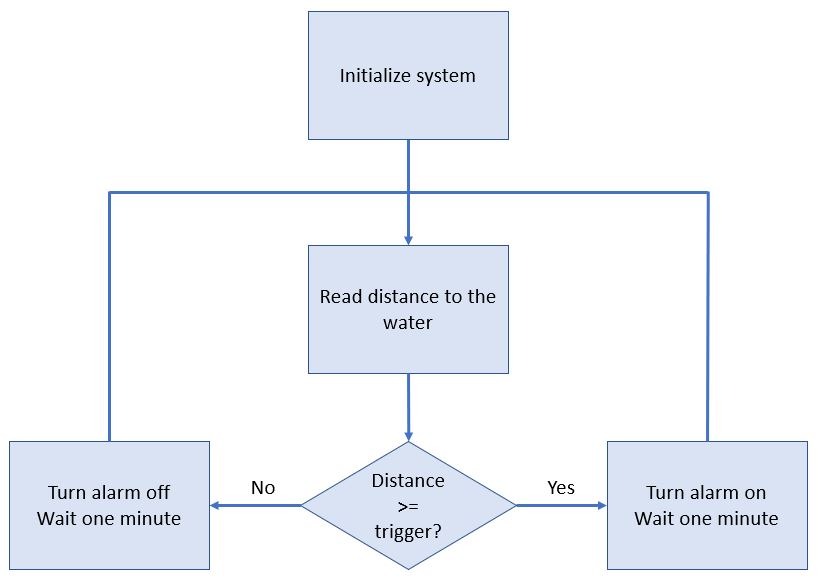
The actual Arduino code used for the water level alarm is shown below:
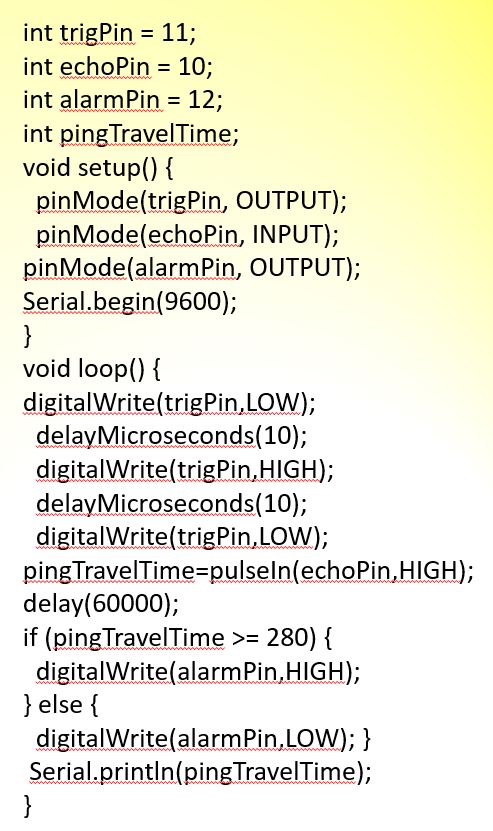
The integrated system provides a cleaner environment for the tropical fishes and, at the same time, it is friendly for the environment because it uses sustainable energy, it eliminates chemical fertilizer runoffs to rivers and oceans and it cleans by itself using a natural symbiotic relationship between plants and fishes. The result we had is that we were able to grow up to a second generation of basil and the tropical fish increased from 12 to more than 40 in the space of 4 months.
I also decided to develop a smartphone App to provide details about this solution because it makes it much easier when I have to replicate the experiment. In fact, I am right now replicating this experiment at the Tagaytay City Special Education Center for the students with special needs in the Philippines and the American Horse School at the Lakota Indian Reservation in Allen, SD, USA. Here is the team working with me on replicating the experiment at their sites:
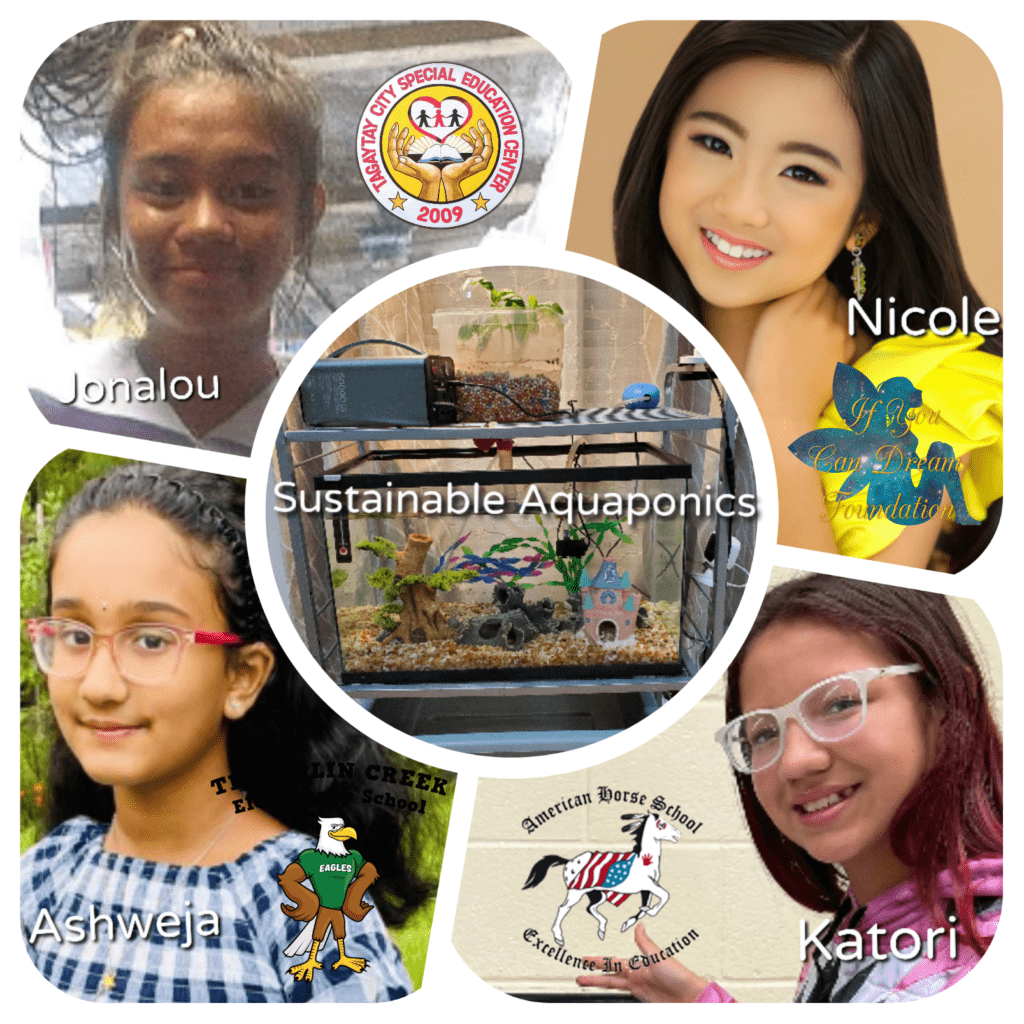
The Sustainable Aquaponics App provides details of the solution as shown below:
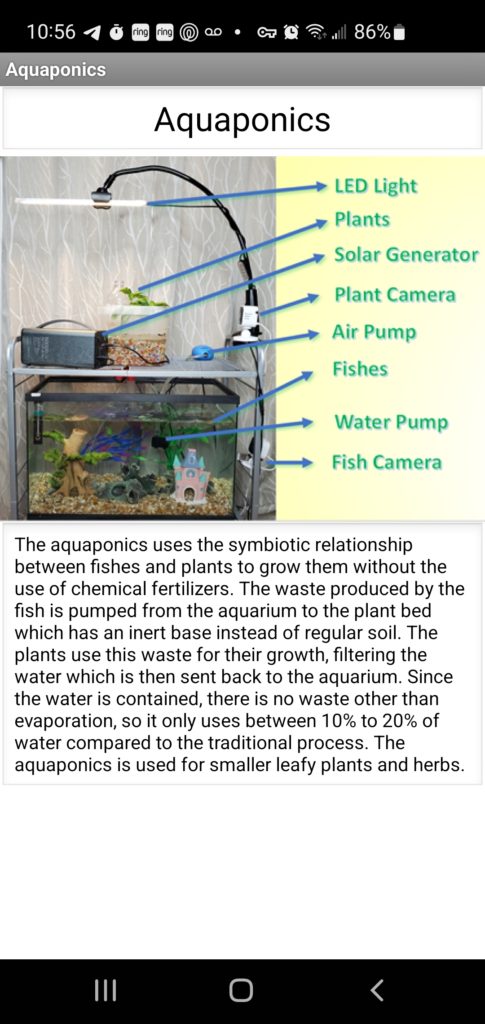
The App emphasizes the importance of the integration between the aquaponics and the green energy plus the different monitoring and automation tools as shown below:
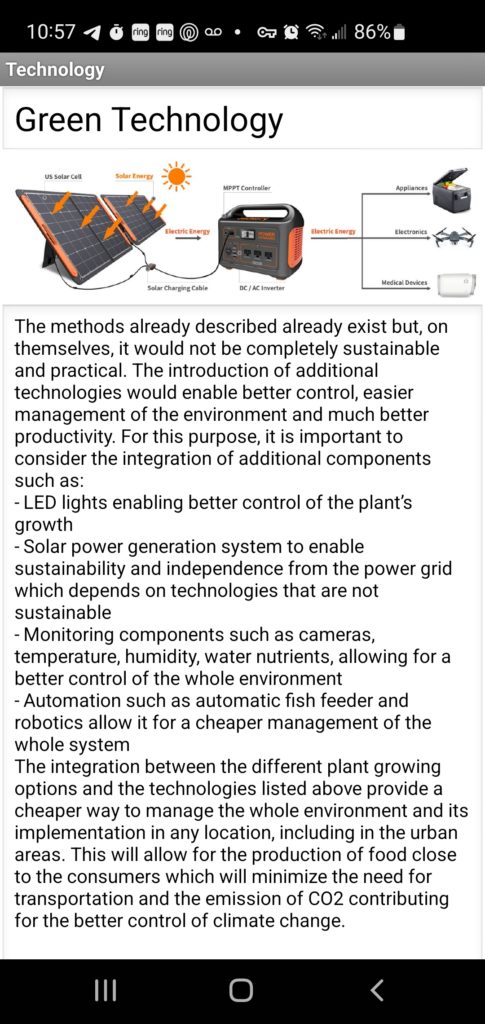
There are other pages that goes into details of the water collection system and other components making it a real integrated solution.
Here are the advantages of this solution:

The Marketing materials produced include a 24×36 poster and a tri-fold brochure. They are going to be in display during the event. Here is the image of the poster:

Here are the images of the front and back, tri-fold brochure:

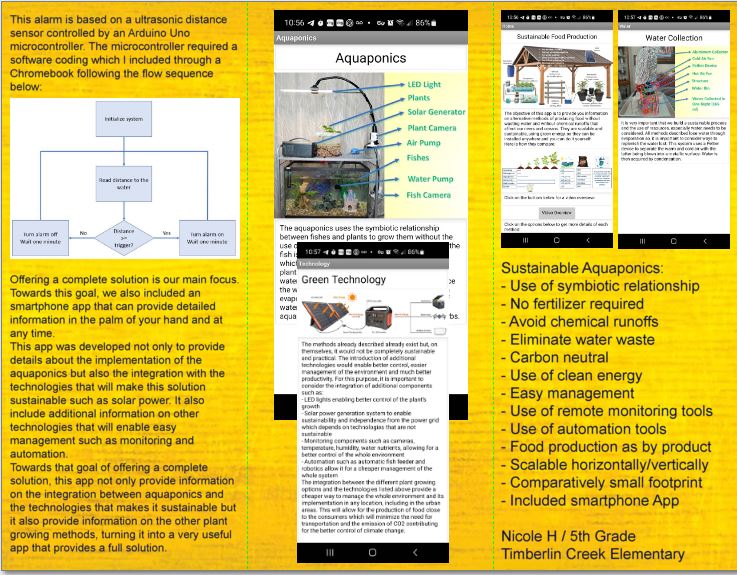
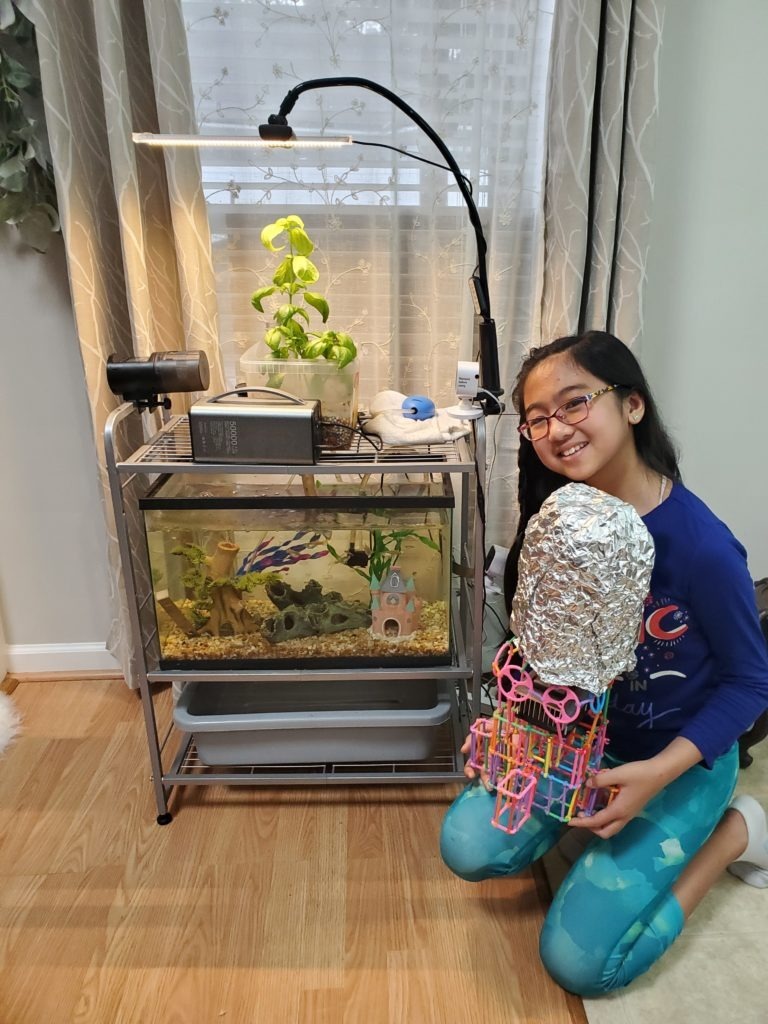
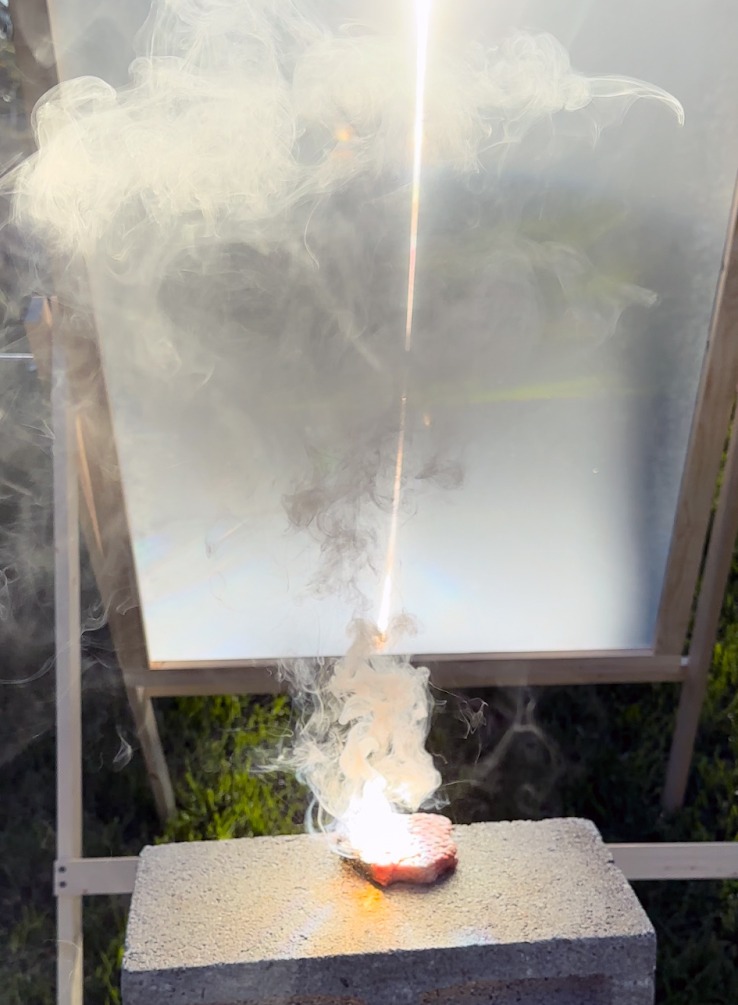
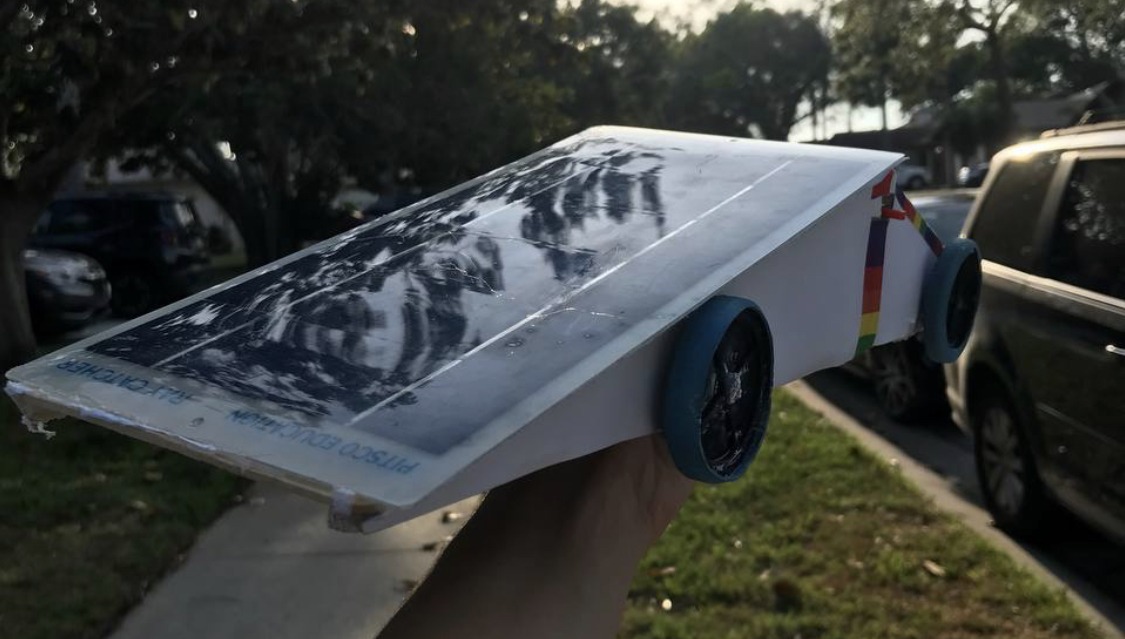
This project is amazing! Great job!